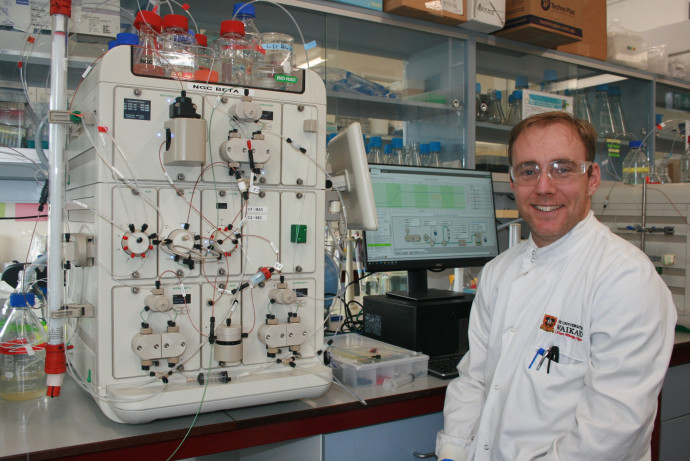Research
Published 1 December 2021How does antibody diversity shape our body’s response to infectious disease?

Our immune system produces antibodies - specialised Y-shaped proteins - to fight against disease-causing pathogens like viruses and bacteria. However, there is a large diversity in the antibody response between different people, meaning some people respond ineffectively to a vaccine or pathogen, and remain susceptible to that disease. The underlying reasons for this variation in immune response is poorly understood.
Antibody molecules have evolved with two distinct regions, one for pathogen binding called the variable region, and the other called the constant region (See Figure 1). Once an antibody locks onto a pathogen binding site at variable region, the constant region is responsible for the recruitment of other immune system components to combat infection. Despite the naming convention, the so-called constant region has over 250 recently identified protein sequence variants across the human population, and the functional consequences of these differences are largely unknown. With support from a Marsden Fast Start grant, Dr William Kelton, and PhD student Annmaree Warrender at the University of Waikato alongside international collaborators Professor Sai Reddy (ETH Zürich) and Professor Jan Terje Andersen (University Hospital Oslo) are investigating how this diversity in the antibody constant region might impact our immune response to viruses such as SARS-CoV-2, the virus causing Covid-19.
Figure 1: Antibody structure and the clearance of viruses. Each antibody has variable regions that bind to pathogens and constant regions that direct the subsequent immune response. To clear viruses, elements of the complement pathway are recruited to destroy the viral envelope (A), or if the virus enters the cell is it targeted for rapid degradation by the TRIM21 pathway (B).
Over the past 18 months, the team have undertaken detailed characterisation of a broad panel of 35 different antibody constant region variants found in humans. They have found that different antibody variants bind with different strengths to C1q, a critical molecule in the anti-bacterial/anti-viral complement pathway (See Figure 1A). These findings suggest the sequences of the specific antibody constant region variants you inherit, will likely influence your capacity to respond to certain infections, with some variants offering greater protection than others. The team is planning to investigate these findings in greater depth with more complex models of complement activity.
Ongoing work is also exploring another antiviral response, the TRIM21 pathway (see Figure 1B). TRIM21 receptors tag viruses that are recognised by antibodies, but still manage to invade a cell. This last line of defence against viral incursion, targets invading viruses for destruction. Dr Kelton and his team are developing assays that mimic TRIM21 binding to understand how natural constant region diversity might impact TRIM21 pathway function.
Together these studies aim to shed light on why some people respond more robustly to viral infections compared to others. In the longer term, a deeper understanding of constant region function could lead to the development of better drugs for use as frontline treatments for infectious disease.
RESEARCHER
Dr William Kelton
ORGANISATION
University of Waikato
FUNDING SUPPORT
Marsden
CONTRACT OR PROJECT ID
UOW1905
